What is an Artificial Intelligence Robot? Definition and Basic Concepts
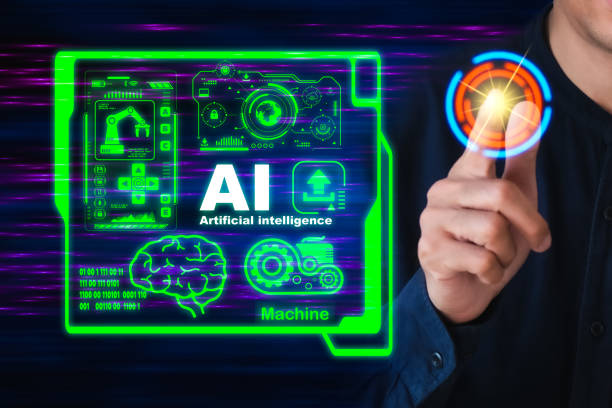
In today’s world, the term Artificial Intelligence (AI) is increasingly heard.
But what happens when this intelligence is combined with robots? An AI robot refers to a robot that, using artificial intelligence algorithms, is capable of performing complex tasks and making independent decisions.
These robots can understand their surroundings, learn from their experiences, and adjust their behavior based on these learnings.
In other words, an AI robot attempts to simulate human cognitive abilities in a machine.
This simulation includes abilities such as reasoning, problem-solving, learning, natural language understanding, and pattern recognition.
To better understand artificial intelligence robots, we must first become familiar with the concept of artificial intelligence.
Artificial intelligence is a branch of computer science that deals with the design and construction of systems that are capable of performing tasks that usually require human intelligence.
These systems use complex algorithms and artificial neural networks to process data and make decisions.
Then, this artificial intelligence is implemented in the form of a robot.
In short, an artificial intelligence robot is an intelligent machine that can perform various tasks without the need for direct human intervention.
These robots are used in various industries such as manufacturing, healthcare, customer service, and even entertainment.
Are you bothered by losing customers due to the old appearance or slow speed of your online store? The expert team at Rasaweb will solve these problems with professional online store website design!
✅ Increase customer trust and your brand’s credibility
✅ Blazing speed and excellent user experience
Get a free consultation with Rasaweb now ⚡
Artificial Intelligence Robot Architecture: Components and How it Works
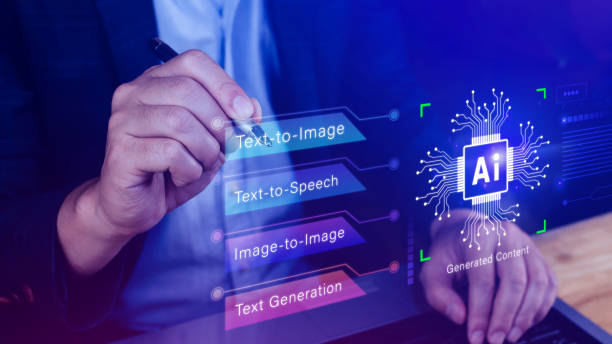
An #AI_robot typically consists of three main parts: sensors, processor, and actuators.
Sensors are responsible for collecting information from the surrounding environment.
This information can include images, sounds, temperature, pressure, and other sensory data.
The processor, which is usually a powerful computer, processes this information and makes decisions.
Actuators are responsible for performing physical actions based on the processor’s decisions.
These actions can include movement, grasping objects, speaking, and other physical activities.
The way an AI robot works is that the sensors first collect information from the environment.
This information is then sent to the processor.
The processor uses artificial intelligence algorithms to analyze the information and make decisions.
Finally, the actuators perform the necessary physical actions based on these decisions.
This process is constantly repeated, and the robot is continuously learning and improving its performance.
One of the most important aspects of the architecture of an artificial intelligence robot is its ability to learn.
Artificial intelligence robots can learn from their experiences and improve their performance through various methods such as supervised learning, unsupervised learning, and reinforcement learning.
This learning ability allows robots to adapt to new conditions and perform more complex tasks.
Applications of Artificial Intelligence Robots in Various Industries
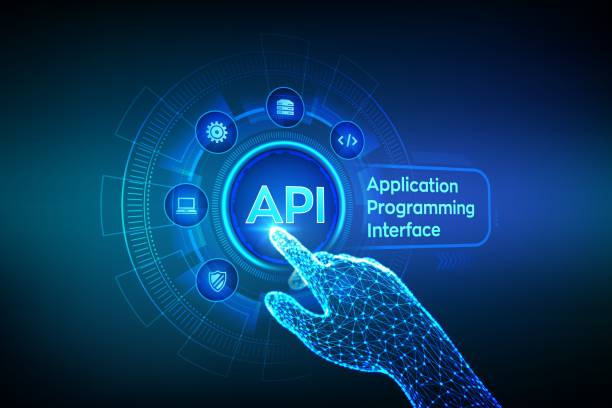
Artificial intelligence robots have applications in various industries and have great potential for transformation in these industries.
In the manufacturing industry, artificial intelligence robots can be used to perform repetitive and dangerous tasks, such as assembling parts, welding, and painting.
This leads to increased productivity, reduced costs, and improved safety.
In the healthcare industry, artificial intelligence robots can be used to perform precise surgeries, assist patients in rehabilitation, and provide remote care services.
In the customer service industry, artificial intelligence robots can be used to answer customer questions, provide technical support, and conduct financial transactions.
This leads to improved customer satisfaction and reduced support costs.
In the logistics and transportation industry, artificial intelligence robots can be used to manage warehouses, deliver goods, and drive self-driving cars.
This leads to increased efficiency, reduced costs, and improved safety.
In addition to these industries, artificial intelligence robots are also used in other fields such as education, agriculture, security, and entertainment.
With the advancement of technology, it is expected that the applications of artificial intelligence robots will become wider and more diverse in the future.
| Industry | Application of AI Robot |
|---|---|
| Manufacturing | Assembling parts, welding, painting |
| Healthcare | Precise surgeries, rehabilitation, remote care |
| Customer service | Answering questions, technical support |
| Logistics and transportation | Warehouse management, delivery of goods, self-driving cars |
Advantages of Using Artificial Intelligence Robots in Businesses
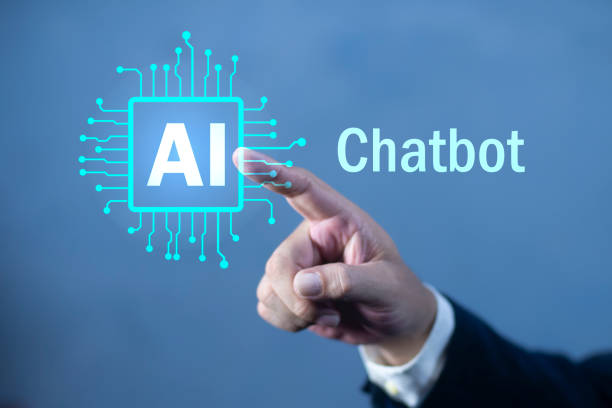
Using #AI_robots in businesses has many advantages.
One of the most important advantages is increased productivity.
Artificial intelligence robots can perform repetitive and tedious tasks continuously and without fatigue.
This leads to increased speed and accuracy in performing tasks.
Another advantage is cost reduction.
Artificial intelligence robots can replace human labor and reduce costs related to salaries, wages, insurance, and training.
Also, artificial intelligence robots can reduce human errors and prevent damages.
Another advantage of using artificial intelligence robots is improving the quality of products and services.
Artificial intelligence robots can work with greater precision and delicacy than humans.
This leads to the production of higher quality products and the provision of better services to customers.
In addition, artificial intelligence robots can help businesses make better decisions.
Artificial intelligence robots can analyze a lot of data and identify patterns and trends that humans are unable to see.
This information can help businesses adopt better strategies and improve their performance.
Finally, using artificial intelligence robots can help businesses offer new innovations.
Artificial intelligence robots can be used for research and development, designing new products, and providing innovative services.
This can help businesses stay ahead of the competition and increase their market share.
Does your current website turn visitors into customers or scare them away? Solve this problem forever with professional company website design by Rasaweb!
✅ Creating a powerful reputation and branding
✅ Attracting target customers and increasing sales
⚡ Get a free consultation now!
Challenges of Implementing Artificial Intelligence Robots and Solutions to Deal with Them

Implementing #AI_robots in businesses also comes with challenges.
One of the most important challenges is the high cost of implementation.
Buying, installing, and setting up an artificial intelligence robot, as well as training employees to work with them, can be costly.
Another challenge is the need for technical expertise.
Implementing and maintaining artificial intelligence robots requires a high level of technical knowledge and expertise.
Businesses may need to hire artificial intelligence specialists or work with consulting firms.
Another challenge is ethical issues.
The use of artificial intelligence robots may lead to job losses and raise questions about accountability and privacy.
Businesses should pay attention to these issues and adopt policies that protect the rights of employees and customers.
To address these challenges, businesses can use a variety of solutions.
They can choose artificial intelligence robots that are compatible with their needs and budget through careful research and review.
Also, businesses can prepare their employees to work with artificial intelligence robots by providing them with appropriate training.
In addition, businesses should pay attention to ethical issues and adopt policies that protect the rights of employees and customers.
They can also contribute to creating an ethical framework for the use of this technology by participating in public discussions about ethical issues related to artificial intelligence.
The Future of Artificial Intelligence Robots: What to Expect
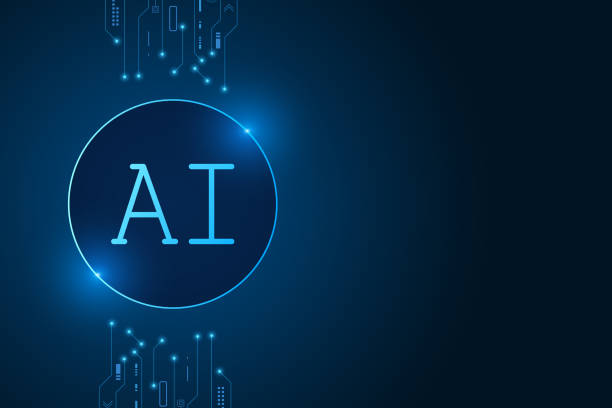
The future of #AI_robots is very bright and full of potential.
With the advancement of technology, artificial intelligence robots are expected to become smarter, more capable, and more affordable.
They will be able to perform more complex tasks and be used in more industries.
One of the most important future trends of artificial intelligence robots is the development of autonomous robots.
Autonomous robots will be able to operate in dynamic and unpredictable environments without the need for human intervention.
These robots can be used in areas such as space exploration, search and rescue, and crisis management.
Another trend is the integration of artificial intelligence robots with other technologies such as the Internet of Things (IoT) and blockchain.
This integration can lead to the creation of smarter and more efficient systems.
For example, artificial intelligence robots connected to the Internet of Things can collect a lot of data from various devices and use this data to improve their performance.
Also, the use of blockchain can increase the security and transparency of artificial intelligence robots.
Despite these potentials, the future of artificial intelligence robots also comes with challenges.
One of the most important challenges is ethical issues.
With the advancement of technology, more attention needs to be paid to the ethical issues related to artificial intelligence robots, and appropriate ethical frameworks for the use of this technology need to be created.
Another challenge is the need for new training and skills.
With the widespread use of artificial intelligence robots, people need to acquire new skills to work with this technology.
Governments and organizations should provide appropriate training programs to teach these skills.
The Impact of Artificial Intelligence Robots on the Labor Market: Opportunities and Threats
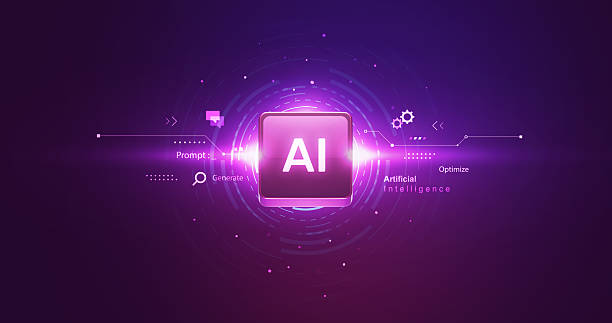
Artificial intelligence robots have a significant impact on the labor market and create both opportunities and threats.
On the one hand, artificial intelligence robots can create new job opportunities in areas such as the development, implementation, and maintenance of artificial intelligence robots.
Also, artificial intelligence robots can help people perform their tasks more effectively and efficiently and have more time to do creative and strategic work.
On the other hand, artificial intelligence robots can lead to job losses in areas that have repetitive and routine tasks.
This can lead to increased unemployment and economic inequality.
To address these threats, governments and organizations need to adopt policies that protect workers from job losses and help them acquire new skills to work in the digital economy.
These policies can include providing free education, creating support networks, and providing unemployment benefits.
In addition, attention needs to be paid to ethical issues related to the impact of artificial intelligence robots on the labor market.
For example, it should be ensured that artificial intelligence robots are used fairly and without discrimination and that workers’ rights are respected.
Also, attention should be paid to how artificial intelligence robots can be used to create a fairer and more sustainable economy.
| Job Opportunities | Job Threats |
|---|---|
| AI Robot Developer | Production Line Operator |
| Robot Maintenance Specialist | Data Entry Clerk |
| Machine Learning Engineer | Telephone Operator |
Key Points in Selecting and Implementing an AI Robot for Your Business

Selecting and implementing an #AI_robot for your business is an important decision that should be made with care and planning.
First of all, you must accurately identify the needs of your business.
What tasks do you want to delegate to the AI robot? What goals do you want to achieve using AI robots? After identifying the needs, you should do the necessary research and identify the AI robots that are compatible with your needs.
When choosing an AI robot, you should pay attention to factors such as price, capabilities, ease of use, and technical support.
Also, you should ensure that the AI robot is compatible with existing systems in your business.
After choosing the AI robot, you should prepare a detailed implementation plan.
This plan should include installation, configuration, training, and testing steps.
Also, you should prepare a maintenance and support plan for the AI robot.
When implementing the AI robot, you should keep in mind that this technology is a tool and not a magic solution.
To achieve the desired results, you must configure the AI robot correctly and train your employees to work with it.
Also, you should continuously monitor the performance of the AI robot and make the necessary adjustments if necessary.
Did you know that a poorly designed online store can scare away up to 70% of your potential customers? Resavab transforms your sales with professional and user-friendly online store website design.
✅ Significant increase in sales and revenue
✅ Full optimization for search engines and mobile
⚡ [Get a free consultation from Resavab]
Reviewing Successes and Failures in the Use of AI Robots
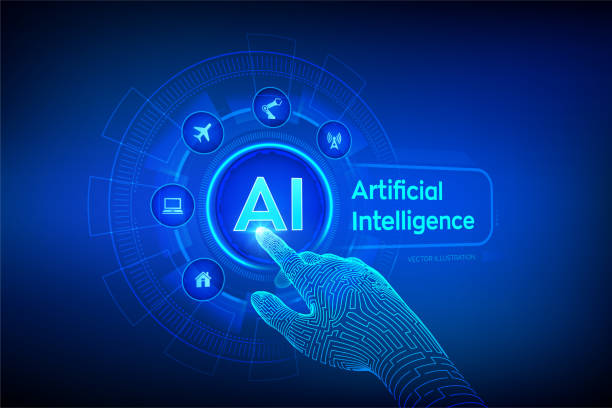
Reviewing cases of success and failure in the use of #AI_robots can provide valuable lessons for businesses.
One of the success stories is the use of AI robots at Amazon.
Amazon uses AI robots to manage warehouses, deliver goods, and provide customer service.
This has led to increased efficiency, reduced costs, and improved customer satisfaction.
Another case is the use of AI robots in the automotive industry.
Companies like Tesla use AI robots to manufacture self-driving cars and improve production quality.
But alongside these successes, there are also cases of failure.
One of the failures is the use of AI robots in some hospitals.
Some hospitals have used AI robots to perform tasks such as diagnosing diseases and providing medical care.
But due to low accuracy and lack of reliability, these robots have failed.
Another case is the use of AI robots in some service companies.
Some companies have used AI robots to provide customer service.
But due to the inability to understand customer needs and provide appropriate responses, these robots have failed.
These cases show that the use of AI robots should be done with care and planning.
Before implementing the AI robot, you must accurately identify the needs of your business and ensure that the AI robot is compatible with these needs.
Also, you should keep in mind that an AI robot is a tool and not a magic solution.
To achieve the desired results, you must configure the AI robot correctly and train your employees to work with it.
Legal and Ethical Considerations in the Use of AI Robots

The use of #AI_robots raises important legal and ethical issues that should be addressed.
One of the most important issues is accountability.
If an AI robot makes a mistake or causes damage, who is responsible? The robot’s manufacturer, the robot’s user, or the robot itself? This question has no definitive answer yet and requires further discussion and review.
Another issue is privacy.
AI robots can collect and process a lot of data about people.
This data can include personal information, financial information, and medical information.
It should be ensured that this data is kept secure and confidential and not used for unauthorized purposes.
Another issue is discrimination.
AI robots may make decisions that are discriminatory based on the data they have been trained on.
For example, an AI robot may discriminate on the basis of gender or race in hiring people.
It should be ensured that AI robots are used fairly and without discrimination.
In addition to these legal issues, there are other ethical issues that should be addressed.
For example, attention should be paid to how AI robots can be used to improve human lives and solve global problems.
Also, attention should be paid to how AI robots can be used to create a fairer and more sustainable society.
To solve these legal and ethical issues, governments, organizations, and individuals need to work together and create appropriate legal and ethical frameworks for the use of AI robots.
Also, public awareness of the legal and ethical issues related to AI robots needs to be increased.
Frequently Asked Questions
| Question | Answer |
|---|---|
| What is an AI Robot? | It is a robot that uses artificial intelligence capabilities to understand the environment, reason, learn, and make decisions to perform complex tasks independently. |
| What is the main difference between a regular robot and an AI robot? | AI robots can learn and adapt to their environment, while regular robots usually operate based on fixed and predetermined plans. |
| In what areas are AI robots used? | In areas such as industry (production lines), medicine (robotic surgery), services (customer support, smart vacuum cleaners), exploration (space and underwater), and entertainment. |
| How do AI robots learn? | They acquire new skills through Machine Learning and Deep Learning algorithms, by analyzing large data and identifying patterns. |
| Can AI robots have emotions? | Currently, no. They can recognize or simulate emotions, but they do not have a real experience of emotions like humans. |
| What are the most important advantages of using AI robots? | Increased productivity, reduced human error, performing dangerous or repetitive tasks, and providing innovative and efficient services. |
| What challenges exist in developing AI robots? | The need for large and high-quality data, the complexity of algorithms, ethical issues, cybersecurity, and the high cost of research and development. |
| Are AI robots dangerous to humans? | No, if safe design principles and ethical regulations are followed. Concerns are more related to social and economic impacts such as changes in the labor market. |
| What is an example of an AI robot in everyday life? | Smart vacuum cleaner robots (such as Roomba) that automatically map and clean the house, or smart voice assistants (such as Siri and Alexa). |
| How is the future of AI robots predicted? | They are expected to become smarter, more autonomous, and capable of more complex interactions with humans, and play a more prominent role in industry, medicine, transportation, and everyday life. |
And other services of Rasa Web advertising agency in the field of advertising
Smart Sales Automation: A creative platform to improve website traffic by managing Google Ads.
Smart Brand Identity: A combination of creativity and technology to increase sales through accurate audience targeting.
Smart Advertising Campaign: A new service to increase customer acquisition through marketing automation.
Smart Reportage: A professional solution to increase sales by focusing on accurate audience targeting.
Smart Digital Branding: Professional optimization to improve SEO ranking by using real data.
And more than hundreds of other services in the field of internet advertising, advertising consulting and organizational solutions
Internet Advertising | Advertising Strategy | Advertising Report
Resources
What are the applications of smart robots in industry?
,Introductory Artificial Intelligence Training – Free
,AI, Robots & Automation in Manufacturing
,What are the benefits of artificial intelligence in business? (Introducing 10 applications of artificial intelligence in business)
? Are you ready to jumpstart your business online? Resavab Afrin Digital Marketing Agency smoothes your path to success by providing comprehensive solutions including professional website design, SEO, and content marketing.
📍 Tehran, Mirdamad Street, next to the Central Bank, Southern Kazeroun Alley, Ramin Alley No. 6
“`




